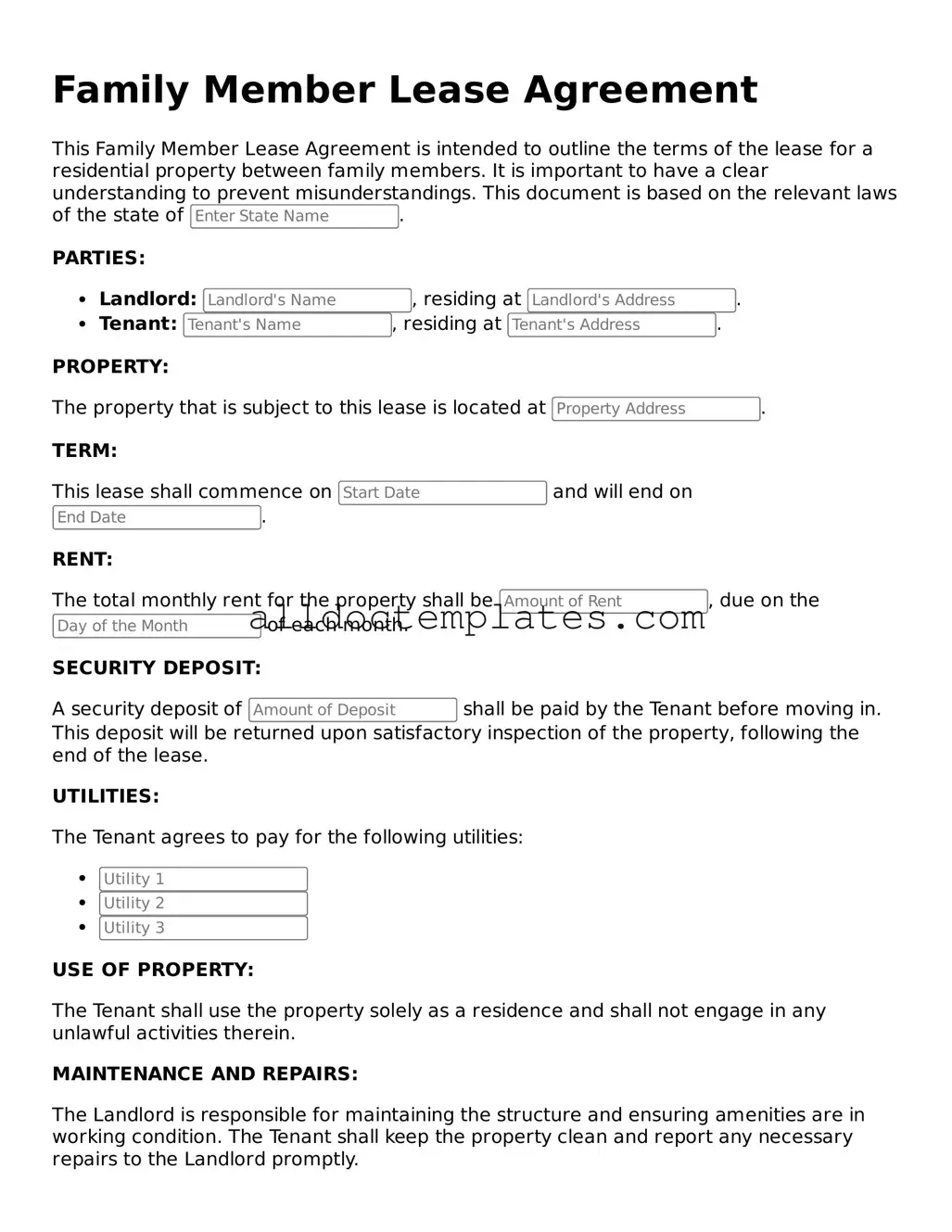Valid Family Member Lease Agreement Template
The Family Member Lease Agreement form is a legal document that establishes the terms of a rental arrangement between family members. This agreement outlines the rights and responsibilities of both the landlord and tenant, ensuring clarity in the leasing process. By formalizing the arrangement, family members can prevent misunderstandings and protect their interests.
Get Your Form Now
